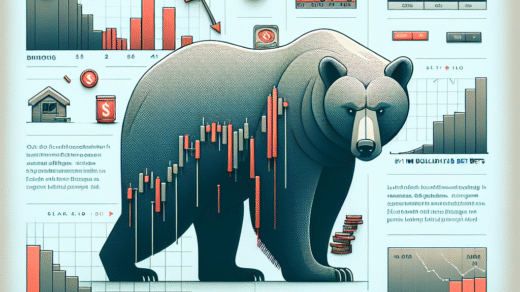In a recent interview with Bloomberg Television, Evy Hambro, the Global Head of Thematic and Sector Investing at BlackRock, provided insights that challenge conventional perceptions about the value of gold. Rather than focusing solely on its current price, Hambro emphasized the importance of understanding what gold can actually purchase, highlighting its relevance in today’s economic climate.
Gold: More Than Just a Price Tag
The debate over whether gold is overpriced has been a longstanding one among investors and economists alike. However, Hambro’s perspective shifts the conversation from a simple price analysis to a more nuanced understanding of gold’s purchasing power. This approach is particularly relevant as inflation concerns and market volatility continue to influence investor sentiment.
Understanding Gold’s Purchasing Power
Hambro’s analysis suggests that gold’s value should not be solely evaluated based on its market price, which can fluctuate due to a variety of factors, including geopolitical instability and changes in monetary policy. Instead, it’s the purchasing power of gold that truly matters. By examining how much goods and services gold can buy, investors can gain a clearer picture of its real value in the economy.
Historical Context: Gold’s Resilience Against Inflation
Historically, gold has served as a hedge against inflation. During periods of economic uncertainty, many investors turn to gold as a safe haven asset. Hambro pointed out that even with current price increases, gold remains relatively stable in terms of its purchasing power compared to fiat currencies, which have been subject to devaluation.
The Role of Institutional Investment in Gold
As institutional investors, like BlackRock, continue to show interest in gold, the dynamics of the market are evolving. The influx of capital from these large investment firms can drive demand and potentially influence gold prices. However, the key takeaway is that institutional interest often reflects confidence in gold’s long-term value rather than short-term price swings.
Comparing Gold to Other Assets
When evaluating gold’s value, it is essential to compare it with other assets, including cryptocurrencies like Bitcoin and Ethereum. While cryptocurrencies have gained significant traction, they also come with volatility that gold traditionally does not. For those looking to diversify their portfolios, understanding both gold and cryptocurrencies is vital. If you want to learn more about how to invest in cryptocurrencies, check out our guides on buying Bitcoin and buying Ethereum.
Market Trends: What Lies Ahead for Gold?
Looking ahead, the question remains: where will gold prices head in the near future? Market analysts often look to economic indicators, such as inflation rates and currency strength, to predict gold’s trajectory. As many investors seek stability amidst uncertainty, gold is likely to remain a focal point in investment strategies.
Conclusion: Gold’s Enduring Appeal
In summary, Evy Hambro’s insights serve as a reminder that the true value of gold extends beyond its price. By focusing on purchasing power, investors can make more informed decisions about their assets. As the financial landscape continues to evolve, understanding the role of gold in investment portfolios becomes increasingly important.
For investors interested in exploring the world of cryptocurrencies alongside traditional assets like gold, consider reading our article on Bitcoin ETFs to understand how these innovative products can fit into your investment strategy.
Meta Description: Discover BlackRock’s Evy Hambro’s insights on gold’s true value beyond price. Learn why purchasing power matters and how it impacts investment strategies in today’s economic climate.







